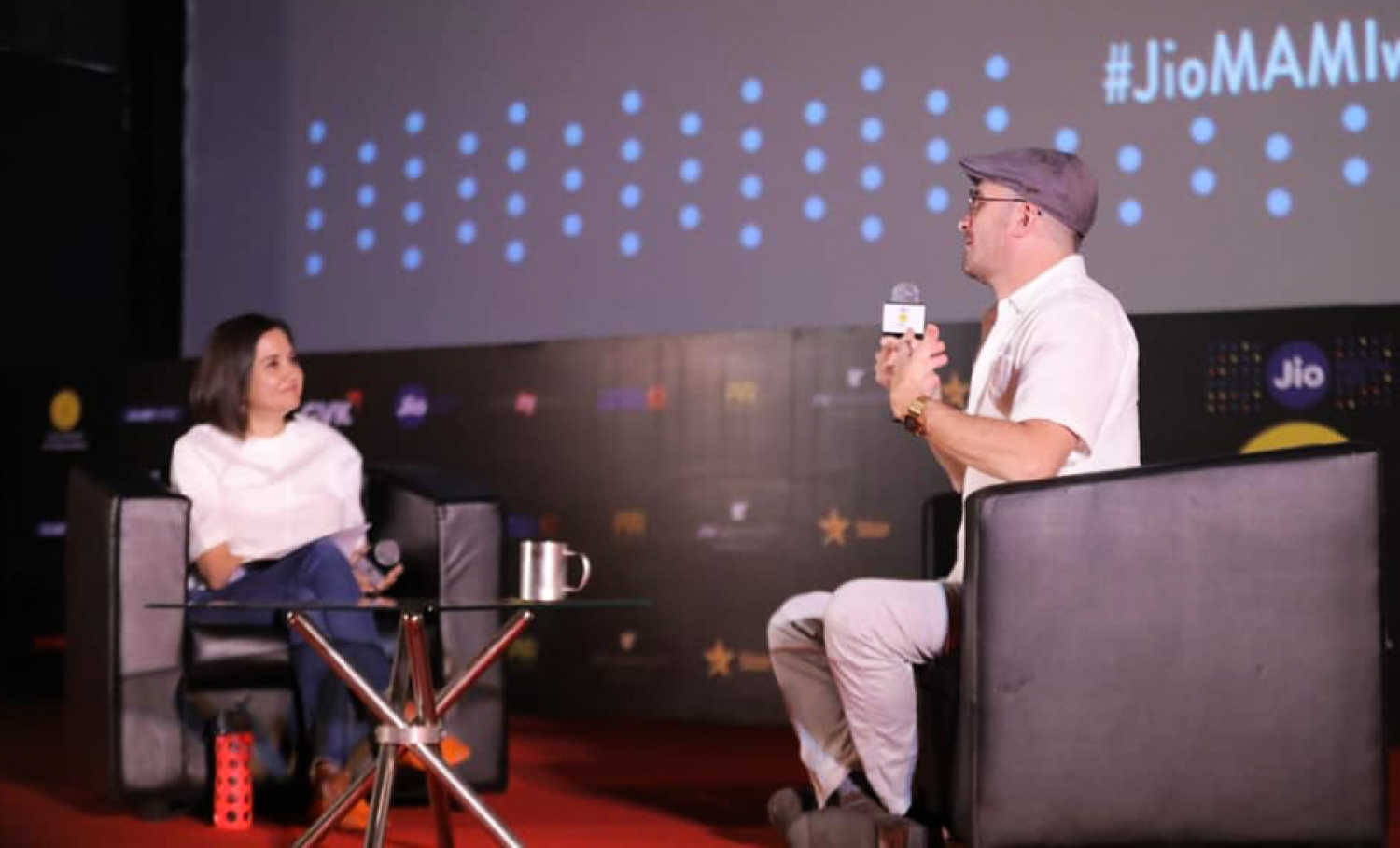The American filmmaker was in conversation with festival director and film critic Anupama Chopra at the 20th Mumbai Film Festival in Liberty Cinema.
Great gift of cinema is empathy: Darren Aronofsky at MAMI 2018 masterclass
Mumbai - 01 Nov 2018 11:47 IST
Updated : 15:48 IST


Sonal Pandya
One of the highlights of this year’s Mumbai Film Festival has been the international filmmakers who have stopped by to talk about their films and techniques to the audiences at the festival. Argentinian filmmaker Lucretia Martel and American filmmaker Darren Aronofsky were two of the personalities speaking about their craft at the sixth day of the festival.
Aronofsky’s masterclass was held at the iconic Liberty Cinema, which opened in 1947, in Mumbai. The 49-year-old filmmaker, wearing a white shirt and grey trousers, with a grey beret and scarf, arrived on stage to roars from the audience and settled down to have a masala chai mixed in with his ayurvedic medicine.
The critically acclaimed Oscar-nominated director is known for his surrealist films like Requiem For A Dream (2000), Black Swan (2010) and Mother! (2017) and has visited India a number of times. This was his sixth visit.
When asked by Chopra where the powerful, often forceful images, in his films come from, Aronofsky answered, “I don’t know why I go into such intense ideas and themes. I think it probably has to do with just always thinking about things that are surprising and exciting, and things that have never been done before. In today’s world it’s very hard to keep people’s attention. It’s about creating ideas, images, and emotion that are really exciting and different for people. These ideas just came out of the stories I was trying to tell.”
A bit later in the conversation, he also said that he was mindful of not alienating the audience with what he was showing onscreen.
“But you never want to do anything that is so extreme that they’re not going to be there with you any more,” he explained. “Once again you’re thinking what are they thinking and what can I show them that’s going to surprise, wow, and maybe scare them, but never go so far that I’m going to lose them. It’s always about how far to push it. There’s definitely stuff you hold back and say that was too much.”
That’s usually where Aronofsky said he has arguments with the studio about what to show. On Black Swan, there’s a scene where the lead actress Natalie Portman pulls a feather out of her back and her knees break graphically, the studio felt it went too far.
“And I was like, no, it’s hilarious! We fought about it. Eventually, I won and I remember sitting at one of the premieres, when that happened, there was some screams, some horror, and there were also people who laughed. And I was like, you see, it’s hilarious,” he said, to laughter from the audience.
Chopra noted that the lead characters in his films are often punished physically. The filmmaker said he was interested in seeing how far people can push their bodies for art and for a film like The Wrestler (2008), starring Mickey Rourke, he made sure to incorporate that into his film.
Aronofsky went to say that by watching films, audiences were learning how to empathize.
“The great gift of cinema is empathy, you can watch a film made here in Mumbai, or in South Africa, or in New York, and if the character is real, it doesn’t matter what their gender, orientation, skin colour or age is, you can relate with them. Watching a movie is practising your empathy, because you’re watching a 5-year-old girl in Tehran, Iran, worry about a goldfish in The White Balloon (1995), you are that five-year-old girl. Presenting really extreme images on screen, I feel that actually make the audience feel what that character is doing. The desperateness, the need, the pleasure, whatever it is that they need that’s expanding your own humanity.”
He also responded to his characters being obsessive in his films and whether it was an offshoot of himself being projected in his cinema.
“I do get obsessive when I work, but I chose a job where I only have to work once every two years," he said, adding that his work obsessions don’t extend to real life. “Most of the time is spent on doing research and thinking about what’s next and living a very normal life, where I get to travel and raise my son. When I get on set, it becomes tremendous obsession. I understand that character and intensity and I’m attracted in exploring what that mindset is.”
A lot of scenes in Aronofsky’s films are closeups of his characters, a technique he likes to use often. He utilises the eyes of the actors inviting us to see within them with what they are expressing.
“I often say the closeup is one of the most overlooked inventions of the 20th century. I think when filmmakers in the early 20th century were able to put the camera right next to the actor’s face, everything changed for cinema,” he stated.
“[When] the camera is close to this actor, and you are in a dark room, you are not that self-conscious about yourself. When it’s a big movie star, whose an incredibly attractive person, you’re not thinking of anything except for what they’re thinking. The marvel of empathy is putting you [in their feet]. You’re imagining what it’s like to be that person with these problems that are going on,” Aronofsky said.
The 20th Mumbai Film Festival ends on 1 November.
Related topics
MAMI

